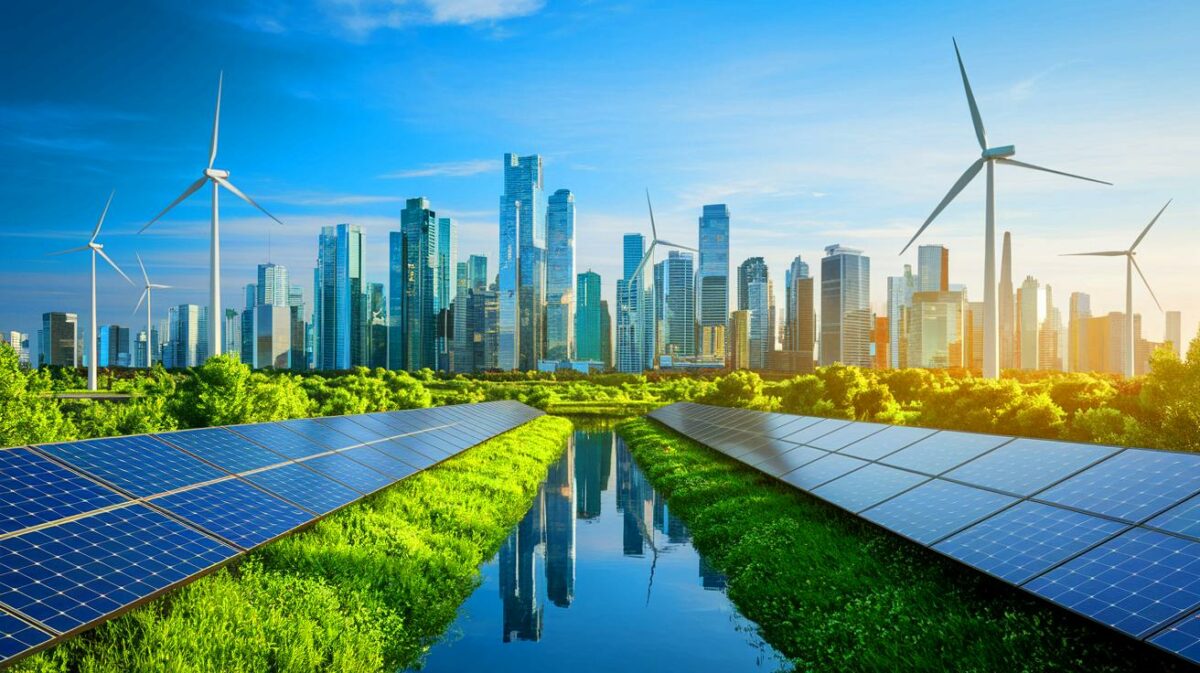| IN A NUTSHELL |
|
In a groundbreaking move, Microsoft has partnered with AtmosClear to set a new benchmark in carbon removal efforts. With an ambitious goal to become carbon-negative by 2030, Microsoft has inked the largest-ever carbon removal agreement with AtmosClear, a venture of Fidelis. This agreement signifies not just a corporate commitment to sustainability, but also a substantial investment in innovative technologies that aim to tackle climate change. By funding the removal of 6.75 million metric tons of carbon over the next 15 years, Microsoft is paving the way for future environmental initiatives. But what does this mean for the industry, and how might it influence global carbon management strategies?
Breaking New Ground in Carbon Removal
The deal between Microsoft and AtmosClear is not just significant due to its size but also because it represents a pioneering approach to carbon removal. The AtmosClear facility, situated in Louisiana, will harness Bioenergy with Carbon Capture and Storage (BECCS) technology to capture approximately 680,000 metric tons of CO₂ each year. What makes this project remarkable is its use of sustainable feedstocks, such as sugarcane waste and forest trimmings, to create clean energy while simultaneously removing carbon from the atmosphere. This dual-purpose facility not only contributes to lowering carbon emissions but also advances the potential for creating low-carbon synthetic fuels, such as renewable natural gas.
The project is expected to become operational by 2029, following a substantial investment exceeding $800 million. This investment is not just a financial commitment but a testament to the belief in the transformative potential of engineered carbon removal. As part of its broader impact, the project promises to create approximately 75 permanent jobs and 600 construction roles, offering a boost to local economies and revitalizing areas affected by previous industrial closures.
Economic and Community Impact
Beyond its environmental ambitions, the Microsoft-AtmosClear partnership is poised to deliver significant economic benefits. The construction and operation of the BECCS facility will stimulate local employment and foster economic growth in the region. This initiative aims to reinvigorate forestry management jobs that were lost due to past mill closures. By leveraging existing skills and resources, the project underscores how sustainable development can coexist with economic prosperity.
Local community leaders and officials are optimistic about the potential for this project to serve as a model for other regions. The substantial job creation not only highlights the direct impact of the facility but also reflects the broader potential of carbon management projects to drive regional development. As Fidelis CEO Daniel J. Shapiro noted, the blend of proven technologies with sustainable practices offers a blueprint for meaningful climate impact while bolstering local economies.
Navigating Political and Financial Challenges
The ambitious scope of the AtmosClear project does not come without challenges, particularly in the political and financial arenas. The project’s reliance on the $85-per-ton 45Q federal tax credit is a focal point of concern, as potential policy changes under the Trump administration could affect the viability of such incentives. The 45Q tax credit has been instrumental in supporting carbon sequestration projects across the U.S., and any alterations could disrupt ongoing and future initiatives.
While Fidelis and Microsoft have not publicly speculated on the project’s future in the absence of these tax credits, the uncertainty underscores the fragile nature of policy-dependent environmental efforts. Nevertheless, Microsoft remains committed to its carbon-negative goal, with Brian Marrs, Senior Director of Energy & Carbon Removal, emphasizing the project’s role in advancing Microsoft’s sustainability objectives. The potential political hurdles highlight the need for stable, long-term policy frameworks to support innovative climate solutions.
Louisiana: A Hub for Carbon Management
Louisiana’s proactive stance in carbon management is evident through its support for the AtmosClear project. The state is positioning itself as a leader in carbon management research and application, with local officials advocating for sustained funding from the U.S. Department of Energy. This advocacy aims to secure resources for ongoing and future projects, including a proposed Direct Air Capture hub in Calcasieu Parish.
The AtmosClear initiative is a testament to Louisiana’s growing reputation as a hub for cutting-edge environmental technology. By fostering a conducive environment for such projects, Louisiana is not only contributing to national carbon reduction goals but also enhancing its economic and technological landscape. The synergy between state initiatives and corporate commitments like Microsoft’s creates a robust framework for advancing carbon management practices.
As Microsoft and AtmosClear embark on this ambitious venture, the implications for the carbon removal industry are profound. This project not only sets a new standard for corporate environmental responsibility but also demonstrates the potential of strategic partnerships in driving significant climate action. With political uncertainties and technological challenges ahead, how will this landmark agreement shape the future of global carbon management efforts?
Did you like it? 4.5/5 (20)








Wow, this is a major step forward for Microsoft! 🌍 How soon can we expect to see results from this initiative?
Is this the start of a trend where big tech companies take the lead in climate action?
Using sugarcane waste sounds like a sweet deal! 🍬
What happens if the tax credit is removed? Will the project still be viable?
Love seeing tech giants take responsibility for the environment. Kudos Microsoft! 👏
Seriously, 75 permanent jobs? Not sure that’s enough to call it an economic boost.
How does this compare to other carbon removal projects around the world?